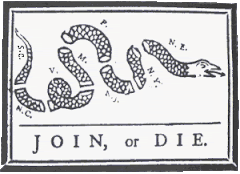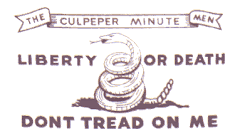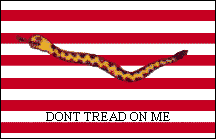That they had come to the railing was not a big surprise, since it was loaded with mixed seeds and nuts. This gourmet repast goes out, courtesy of moi, every morning, because it attracts a nice variety of colorful – and vocal – birds, creating a fascinating little panorama right outside my kitchen. I rarely breakfast alone.
The birds, of all species, usually take care of feeding themselves, except for certain brief periods in the late spring, like now. Then, you will occasionally see a parent bird feeding its chick. You know it’s a chick – as opposed to an adult – because, well, you can just tell. Immature and awkward in appearance, the hatchling is also devoid of the bright, fixed colors of the adult, and tends to vibrate, rather than flap, its wings, even while stationary and perched. It is also usually squealing to be fed, not unlike the newly arrived of any species.
 What made this particular scene so unusual, though, were the two birds involved. The parent was a common house sparrow; small, quick, grayish-brown, an urban survivor that was the most common sighting for a kid like me, growing up in Brooklyn. I guess I’ve seen more sparrows than any other species – pigeons included.
What made this particular scene so unusual, though, were the two birds involved. The parent was a common house sparrow; small, quick, grayish-brown, an urban survivor that was the most common sighting for a kid like me, growing up in Brooklyn. I guess I’ve seen more sparrows than any other species – pigeons included.Mom or Dad? Who knows? In this story it doesn’t matter. What does matter is that the parent was feeding the chick; picking up a seed, shelling it, and hopping over to the stationary hatchling as it chirped and fluttered impatiently for its breakfast, bill agape. The adult would then delicately place the seed directly into its offspring’s throat, and without delay would hop away again to pick at the next seed, the process repeating for several minutes, or until a bigger, bossier bird came along and shooed them both away.
It was the chick that caught my attention. Hatchlings seldom have the same coloration as adults, so the disparity displayed in shades of grey and brown really was of no consequence - but it just didn’t look like the parent. Close examination, and lots of reading, would have revealed a great many ornithological differences between the two, but the thing that even the most casual bird-watcher couldn’t miss was the size.
The chick was twice as big as the parent.
This led to a double-take and some hard thinking; nothing about this hungry little dependent said sparrow. I sipped and pondered. Maybe it was a sparrow; I like watching birds, but I’m no bird-watcher, if you know what I mean. Maybe sparrow offspring looked like that – but that really didn’t make sense. What newborn is larger than its parents, and grows smaller as it matures? None I could think of, and hey, I’ve been watching all those nature channels for years. Research was in order. And that meant Google.
 Now, with tongue firmly implanted in cheek, I will tell you that I’m not going to give away my search engine "secrets" – those are proprietary formulae – but let’s just say I got my answer, complete with pictures, in short order. The parent was, of course, a sparrow; the chick, however, was not. It was a baby cowbird.
Now, with tongue firmly implanted in cheek, I will tell you that I’m not going to give away my search engine "secrets" – those are proprietary formulae – but let’s just say I got my answer, complete with pictures, in short order. The parent was, of course, a sparrow; the chick, however, was not. It was a baby cowbird.Cowbirds, the adult version, look to my rank amateur eyes like small crows, with a sleek coloration that looks pitch black from a distance, but which can have an ultra-dark green sheen to it when seen up close. What makes them so easily identifiable are their brown heads. Pretty unremarkable bird, really, except that it has evolved a most unusual method of child-rearing – it lets somebody else do it.
 Since the staple of the cowbird’s diet, in nature, is insects, not the seeds on my railing, it has taken to following, well, cows. When a large number of bovines move through a field, they stir up vast quantities of delectables for the bird, which therefore makes a life’s work of following the herd. This leaves no time for stay-at-home moms and dads.
Since the staple of the cowbird’s diet, in nature, is insects, not the seeds on my railing, it has taken to following, well, cows. When a large number of bovines move through a field, they stir up vast quantities of delectables for the bird, which therefore makes a life’s work of following the herd. This leaves no time for stay-at-home moms and dads.So what mom does is lay her egg in someone else’s nest. Just like that. She’s not particular, virtually any nest will do; it matters not to her if the eggs are of a different size or color. What she knows is that the instincts of the host birds will insure that her offspring is properly cared for in ovum, and carefully protected, fed and tended for as a hatchling.
The scientific name for this phenomenon is parasitic brooding, and it has a dark side. Cowbird chicks are very aggressive, grow very quickly, and tend to consume most of the food brought back to the nest. This has an effect on the rest of the brood that is about as bad as one would expect – they starve to death, and if they don’t starve, they are pushed out of the nest very early on by the much larger cowbird hatchling. Either way, all the resources of the diligent parents are lavished on the offspring of another mating pair – and to boot, not even a pair of the same species.
It is taking place right before my eyes, even as I write this. I am watching a poor, hard-working sparrow busting its tail-feathers to feed this fledgling that is not its own, and the cowbird chick, for its part, is insistent, hounding the surrogate mother incessantly, its appetite never satiated, its beak never closed longer than the moment it takes for it to swallow.
As I watch I notice something else: when the sparrow leaves the fence for a bit, maybe to rest, maybe because it is frightened momentarily by something it sees, the cowbird begins to feed itself. It moves along, quite capably, pecking at the seed mix – that is, until the sparrow returns. The chick then reverts to its dependent posture, mouth open, waiting to be fed and never getting enough.
I cannot get angry at the workings of nature; everything that is playing out before my eyes is instinct that has been honed by tens of thousands of generations of adaptation – it is an evolutionary fugue being performed so exquisitely none could doubt the hand of God in the process. Nature, as we all know and have heard many times, can be infinitely beautiful – but also unspeakably cruel. So, as I said, I cannot get angry. But I do.
I think of the mating pair of sparrows and imagine they feel despair. I imagine that they had hopes and dreams for their offspring, whom they wanted to nurture and prepare for life, and for whom they worked so diligently to build a protected and secure nest. I imagine their confusion at the disappearance of the eggs or the brood, and wonder if they are aware that their nest has been hijacked, dismayingly, from within, and that they now expend their resources and energy taking care of the offspring of another.
Of course I know that they “feel” nothing, and are “aware” of none of those things, but what human being cannot feel empathetic sorrow for the sparrows, and narrow-eyed animosity toward the cowbird?
That we - human beings - are part of nature is undeniable, and I believe that all life forms, sentient and otherwise, which share this planet must adapt to each other, symbiotes and parasites alike. Indeed, human frailty might determine that some of the unfortunate among us might be rendered dependent upon the good nature and good will of others. An accident, of birth or beyond, may render one helpless, and in need of complete and total care. Only the most heartless man could or would deny another man such attention.
 But there is a point at which I draw the line; where I refuse to lift a finger. That is when I am looked upon as a human sparrow through the eyes of a human cowbird. And when my government, through policies which are mistaken, misguided and self-serving, subjects me to the same treatment as the sparrow, well, I refuse to accept that, too.
But there is a point at which I draw the line; where I refuse to lift a finger. That is when I am looked upon as a human sparrow through the eyes of a human cowbird. And when my government, through policies which are mistaken, misguided and self-serving, subjects me to the same treatment as the sparrow, well, I refuse to accept that, too.







